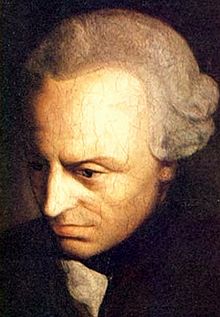The Pluralism of Aesthetic Autonomy in Kant’s Analytic of the Beautiful
These reflections were published in The Journal of Aesthetics and Culture, Vol 5., 2013 as part of “Autonomy, Pluralism, Play: Danto, Greenberg, Kant, and the Philosophy of Art History.” Download a pdf of the complete article here, or cite this post as: Buckner, Clark. “The Pluralism of Autonomous Aesthetic Judgment in Kant’s Analytic of the Beautiful.” www.clarkbuckner.com. Web. Day, month, year the post was accessed.
As the crux of what he addresses as the antinomy of taste, Kant observes that the autonomy of aesthetic judgments is distinguished by its pluralism. Judgments of beauty are singular judgments based upon sensuous experiences that nevertheless lay claim to universal agreement. Directly opposing Aurthur Danto’s equation of modernism’s art for art’s sake with the pursuit of philosophical self-definition, Kant thus distinguishes aesthetic judgments from both cognitive and moral judgments, on the basis of their lack of conceptual foundations. Rather than determinate, he contends, the autonomy of aesthetic judgments is defined precisely by its reflexive underdetermination. In its disinterested, contemplative quality aesthetic judgments do not entail the same investment in their object as either cognitive or moral judgments. Instead their normativity lies in the subjective states they engender. However, because this subjectivity is – for the same reason – not rooted in the eccentricities of merely empirical contingencies, it nevertheless lays claim to universal assent. As characteristic of their pluralism, Kant observes that aesthetic judgments remain rooted in time, always to be determined again in the singularity of the sensual encounter, as what he paradoxically calls, contingently necessary. Accordingly, he notes that aesthetic ideals do not therefore admit of perfection. While no less binding in the normativity of the standard they present, aesthetic ideals do not instantiate general types. To the contrary, they frequently – perhaps even always – entail aberrations that defy the expectations of established standards: Cleopatra’s nose or Kirk Douglas’ chin, the asymmetry in the smile on the Mona Lisa, or the touch of yellow that interrupts the fiery red of a sunset. Despite the evoking a normative ideal, each remains singular in its eccentricity, and so ought not to be confused with a model of perfection – which, again, implies the instantiation of a concept – but rather must be understood as exemplary.
As a potential stumbling block in the logic of his analysis, Kant notes that, contrary to objects of natural beauty, artworks are created as realizations of artistic intentions. Are they not therefore incarnations of antecedent concepts drawn from the minds of their creators? Kant argues, no. Were there some such determining concept in artistic creation, art would be either merely a matter of eccentrically subjective, sensual gratification, explicable by recourse to the cognitive principles of empirical science, or it would be a objectively normative moral concern, explicable by recourse to ethical principles. Accordingly, Kant concludes, we rather attribute to artists a natural gift, which drives their creative practices and distinguishes the ideas that inform their projects from the determinate concepts of the understanding: namely, genius. And, in his theory of genius, Kant again postulates the normative standards of aesthetic judgments in artworks as pluralistic.
Despite the critical judgment undoubtedly entailed in their production, artworks do not realize pre-conceived generalities, and ought not to be misunderstood as instantiating mutually exclusive theories of art. At the same time, however, despite this lack of conceptual determination, they are not merely random nonsense. Indeed, Kant contends, the products of genius “give the rule to art,” but in and through the sensuous particularities of their works – like he says of ideal beauties – as exemplars. To slavishly “copy” an artist’s work as if it gave the rule to art as a model of perfection – which is, of course, not only common but the essence of “academicism” – would be to compromise, rather than realize the principle of his or her genius. Instead, Kant contends, genius begets genius. It too serves not as a model of perfection but rather as an exemplary ideal, which inspires students – or at least those with the necessary natural endowment – to respond in kind, producing singularly universal works of their own. Rather than dogmatically exclusive, the rule that genius sets for art thus inspires the proliferation of other similarly exemplary works: paradoxically mandating diversity.
Finally, as the decisive point of contrast between his aesthetic theory and Danto’s philosophy of art history, Kant explains the normativity of aesthetic judgments as the pleasurable, “free play” of the faculties that they engender. While objects of aesthetic enjoyment neither satisfy needs, nor realize moral norms, he contends, they nevertheless exhibit, what he calls, a “purposeless purposiveness,” evidenced by their power to enthrall us, and manifested in the form of finality: the sense that something appears just as it should, which we express when we proclaim, “that’s beautiful.” Registered in this purposeless purposiveness is, according to Kant, not the empirical qualities of objects themselves, but rather the reflexive quickening of our own faculties. Nevertheless, he is careful to note, in aesthetic reflection, the mind does not simply wander aimlessly. Instead, the free play of the faculties entails a sense of harmony – an imagined order in experience that sustains and stimulates their play – in spite of the absence of any determining cognitive or moral concept. Aesthetic judgments register the enjoyment of our very capacity to find order in experience, to imagine possible orders. Although it fulfills no determinate concept, the harmonies of aesthetic form thus affectively satisfy cognition in general, by presenting a sensible order, which instills a sense of wonder and enlivens our engagement with the world. Whereas Danto juxtaposes aesthetic autonomy, as dogmatic determination, to aesthetic pluralism, as an indifferent free play, for Kant, the autonomy of aesthetic judgments is thus itself defined – precisely in opposition to the kind of conceptual determination with which Danto conflates it – by free play; and the undetermined free-play of the faculties is itself the basis of their normative definition.
But how then is this pluralism of aesthetic judgments manifested in the history of modern art’s pursuit of self-definition?

